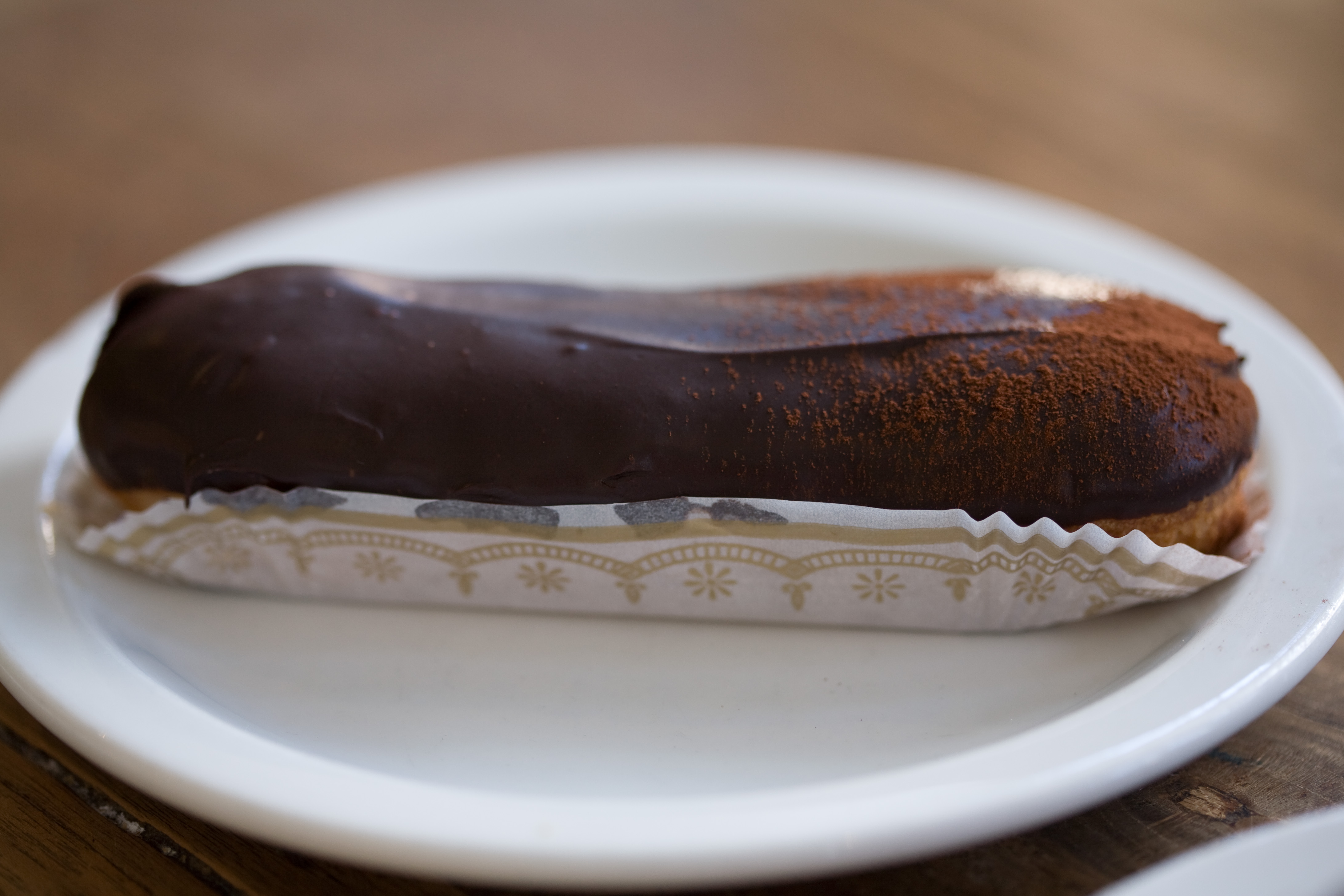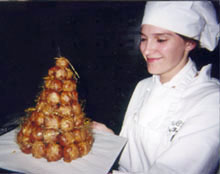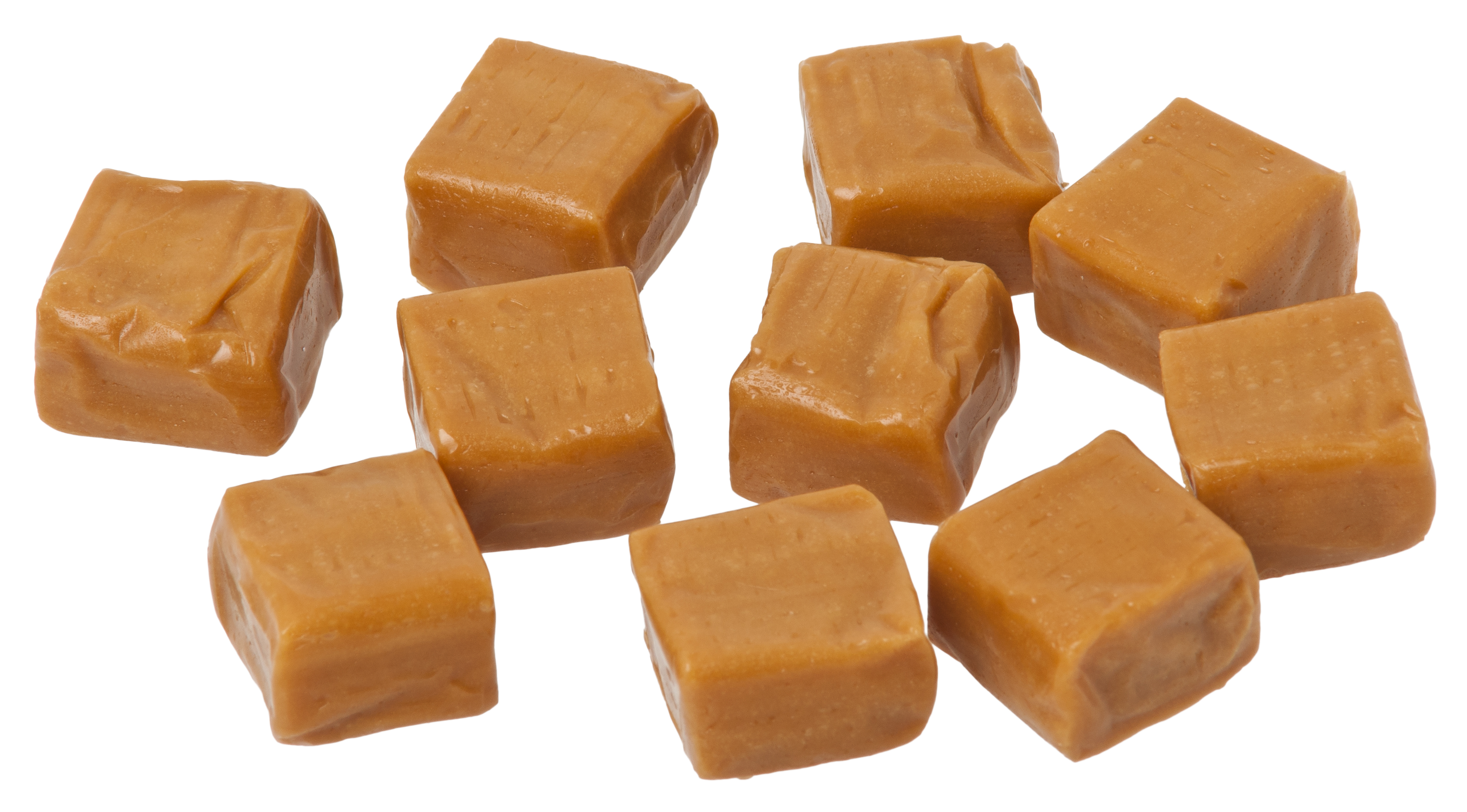|
Éclair
An éclair (, ; ) is a pastry made with choux dough filled with a cream and topped with a flavored icing. The dough, which is the same as that used for profiterole, is typically piped into an oblong shape with a pastry bag and baked until it is crisp and hollow inside. Once cool, the pastry is filled with custard (''crème pâtissière''), whipped cream or chiboust cream, then iced with fondant icing. Montagné, Prosper, '' Larousse gastronomique: the new American edition of the world's greatest culinary encyclopedia'', Jenifer Harvey Lang, ed., New York: Crown Publishers, 1988, p. 401 Other fillings include pistachio- and rum-flavoured custard, fruit-flavoured fillings, or chestnut purée. The icing is sometimes caramel, in which case the dessert may be called a bâton de Jacob. A similar pastry in a round rather than oblong shape is called a Religieuse. Etymology The word comes from the French ''éclair'', meaning "flash of lightning", so named because it is eaten qui ... [...More Info...] [...Related Items...] OR: [Wikipedia] [Google] [Baidu] |
List Of Choux Pastry Dishes
This is a list of choux pastry dishes. Choux pastry, or ''pâte à choux,'' is a light pastry dough that contains only butter, water, flour and eggs. The high moisture content of the dough causes it to produce steam when cooked, which puffs the pastry. Choux pastry dishes See also * List of baked goods This is a list of baked goods. Baked goods are foods made from dough or batter and cooked by baking, a method of cooking food that uses prolonged dry heat, normally in an oven, but also in hot ashes, or on hot stones. The most common baked item ... {{DEFAULTSORT:choux Pastries Lists of foods by ingredient Dessert-related lists Choux pastry ... [...More Info...] [...Related Items...] OR: [Wikipedia] [Google] [Baidu] |
Pastry Bag
A pastry bag (or piping bag in the Commonwealth) is an often cone- or triangular-shaped bag made from cloth, paper, plastic, or the intestinal lining of a lamb, that is squeezed by hand to ''pipe'' semi-solid foods by pressing them through a narrow opening at one end often fitted with a shaped nozzle, for many purposes including in particular cake decoration and icing. It is filled through a wider opening at the opposite end, rolled or twisted closed, and then squeezed to extrude its contents. Many differently shaped nozzles are used to produce cross-sections such as star, leaf, and flower-petal shapes; a simple circular nozzle makes round shapes and is also used for filling pastries such as profiteroles. In addition to icing, pastry bags are commonly used to shape meringue and whipped cream, and to fill doughnuts with jelly or custard. They are used to form cream puffs, Ă©clairs, and ladyfingers. Bags can also be used to shape savory foods such as filling for deviled eggs, ... [...More Info...] [...Related Items...] OR: [Wikipedia] [Google] [Baidu] |
Long John (doughnut)
The Long John is a bar-shaped, yeast risen pastry like a doughnut either coated entirely with glaze or top-coated with cake icing. They may be filled with custard or creme. The term ''Long John'' is used in the Midwestern U.S. and Canada, and has been used in Texas. In other parts of the United States and Canada, such as the Mid-Atlantic and Central Canada, Long Johns are sometimes marketed as "Ă©clairs"; the two pastries look similar but are created with different types of dough (steam-puffed vs. yeast-risen) and sometimes different fillings (the Ă©clair may have chiboust cream). The Ă©clair has (usually chocolate) fondant icing. On the American West Coast and British Columbia, Long Johns are called bars or bar doughnuts, such as the maple bar and the chocolate bar (depending on the frosting). Filled Long Johns are called ''filled bars'', or ''filled bar doughnuts''. For example, an unfilled (or even custard-filled) Long John with maple-flavored icing is called a ''ma ... [...More Info...] [...Related Items...] OR: [Wikipedia] [Google] [Baidu] |
French Cuisine
French cuisine () is the cooking traditions and practices from France. It has been influenced over the centuries by the many surrounding cultures of Spain, Italy, Switzerland, Germany and Belgium, in addition to the food traditions of the regions and colonies of France. In the 14th century, Guillaume Tirel, a court chef known as "Taillevent", wrote '' Le Viandier'', one of the earliest recipe collections of medieval France. In the 17th century, chefs François Pierre La Varenne and Marie-Antoine Carême spearheaded movements that shifted French cooking away from its foreign influences and developed France's own indigenous style. Cheese and wine are a major part of the cuisine. They play different roles regionally and nationally, with many variations and ''appellation d'origine contrôlée'' (AOC) (regulated appellation) laws. Culinary tourism and the '' Guide Michelin'' helped to acquaint commoners with the ''cuisine bourgeoise'' of the urban elites and the peasant ... [...More Info...] [...Related Items...] OR: [Wikipedia] [Google] [Baidu] |
Pastry
Pastry is baked food made with a dough of flour, water and shortening (solid fats, including butter or lard) that may be savoury or sweetened. Sweetened pastries are often described as '' bakers' confectionery''. The word "pastries" suggests many kinds of baked products made from ingredients such as flour, sugar, milk, butter, shortening, baking powder, and eggs. Small tarts and other sweet baked products are called pastries as a synecdoche. Common pastry dishes include pies, tarts, quiches, croissants, and pasties. The French word pâtisserie is also used in English (with or without the accent) for the same foods. Originally, the French word referred to anything, such as a meat pie, made in dough (''paste'', later ''pâte'') and not typically a luxurious or sweet product. This meaning still persisted in the nineteenth century, though by then the term more often referred to the sweet and often ornate confections implied today. Pastry can also refer to the pastry ... [...More Info...] [...Related Items...] OR: [Wikipedia] [Google] [Baidu] |
Choux Pastry
Choux pastry, or (), is a delicate pastry dough used in many pastries. Basic ingredients usually only include butter, water, flour and eggs (auxiliary ingredients and flavorings are also added). Instead of a raising agent, choux pastry employs its high moisture content to create steam, as the water in the dough evaporates when baked, puffing the pastry. The pastry is used in many European cuisines, including French cuisine and Spanish cuisine, and is the basis of many notable desserts, including profiteroles, éclairs and churros. History According to some cookbooks, a chef by the name of Pantarelli or Pantanelli, Catherine de' Medici's head chef, invented the dough in 1540, seven years after he left Florence with Medici and her court. He used the dough to make a gâteau and named it . Over time, the recipe of the dough evolved, and the name changed to , which was used to make , named after Pantanelli's successor Popelini, small cakes supposedly made to resemble the sha ... [...More Info...] [...Related Items...] OR: [Wikipedia] [Google] [Baidu] |
Religieuse
Religieuse is a French pastry made of two choux pastry cases, one larger than the other, filled with crème pâtissière, most commonly chocolate or mocha. Each case is covered in a ganache of the same flavor as the filling, and then joined decorated with piped buttercream frosting. The pastry, whose name means "nun", is supposed to represent the papal mitre. Religieuse itself was supposedly conceived in the mid-nineteenth century, but the first version of the batter was invented in 1540 by Popelini, the Florentine chef of the Florentine queen of France, Catherine de' Medici. After subsequent iterations, the batter finally took its current form in the early 19th century in the kitchens of Marie-Antoine Carême, "The King of Chefs and the Chef of Kings". Religieuse is a type of éclair. See also * * * List of choux pastry dishes * List of French desserts This is a list of desserts from the French cuisine. In France, a chef who prepares desserts and pastries is called a pà ... [...More Info...] [...Related Items...] OR: [Wikipedia] [Google] [Baidu] |
Pastry
Pastry is baked food made with a dough of flour, water and shortening (solid fats, including butter or lard) that may be savoury or sweetened. Sweetened pastries are often described as '' bakers' confectionery''. The word "pastries" suggests many kinds of baked products made from ingredients such as flour, sugar, milk, butter, shortening, baking powder, and eggs. Small tarts and other sweet baked products are called pastries as a synecdoche. Common pastry dishes include pies, tarts, quiches, croissants, and pasties. The French word pâtisserie is also used in English (with or without the accent) for the same foods. Originally, the French word referred to anything, such as a meat pie, made in dough (''paste'', later ''pâte'') and not typically a luxurious or sweet product. This meaning still persisted in the nineteenth century, though by then the term more often referred to the sweet and often ornate confections implied today. Pastry can also refer to the pastry ... [...More Info...] [...Related Items...] OR: [Wikipedia] [Google] [Baidu] |
Choux Pastry
Choux pastry, or (), is a delicate pastry dough used in many pastries. Basic ingredients usually only include butter, water, flour and eggs (auxiliary ingredients and flavorings are also added). Instead of a raising agent, choux pastry employs its high moisture content to create steam, as the water in the dough evaporates when baked, puffing the pastry. The pastry is used in many European cuisines, including French cuisine and Spanish cuisine, and is the basis of many notable desserts, including profiteroles, éclairs and churros. History According to some cookbooks, a chef by the name of Pantarelli or Pantanelli, Catherine de' Medici's head chef, invented the dough in 1540, seven years after he left Florence with Medici and her court. He used the dough to make a gâteau and named it . Over time, the recipe of the dough evolved, and the name changed to , which was used to make , named after Pantanelli's successor Popelini, small cakes supposedly made to resemble the sha ... [...More Info...] [...Related Items...] OR: [Wikipedia] [Google] [Baidu] |
Profiterole
A profiterole (), cream puff (US), or ''chou à la crème'' () is a filled French and Italian choux pastry ball with a typically sweet and moist filling of whipped cream, custard, pastry cream, or ice cream. The puffs may be decorated or left plain or garnished with chocolate sauce, caramel, or a dusting of powdered sugar. Savory profiterole are also made, filled with pureed meats, cheese, and so on. These were formerly common garnishes for soups. The various names may be associated with particular variants of filling or sauce in different places. Preparation Choux pastry dough is piped through a pastry bag or dropped with a pair of spoons into small balls and baked to form largely hollow puffs. After cooling, the baked profiteroles are injected with filling using a pastry bag and narrow piping tip, or by slicing off the top, filling them, and reassembling. For sweet profiteroles, additional glazes or decorations may then be added. Presentation The most common presentation ... [...More Info...] [...Related Items...] OR: [Wikipedia] [Google] [Baidu] |
Chestnut
The chestnuts are the deciduous trees and shrubs in the genus ''Castanea'', in the beech family Fagaceae. They are native to temperate regions of the Northern Hemisphere. The name also refers to the edible nuts they produce. The unrelated horse chestnuts (genus ''Aesculus'') are not true chestnuts, but are named for producing nuts of similar appearance that are mildly poisonous to humans. True chestnuts should also not be confused with water chestnuts, which are tubers of an aquatic herbaceous plant in the sedge family Cyperaceae. Other species commonly mistaken for chestnut trees are the chestnut oak (''Quercus prinus'') and the American beech ('' Fagus grandifolia''),Chestnut Tree in chestnuttree.net. both of which are also in the Fagaceae family. [...More Info...] [...Related Items...] OR: [Wikipedia] [Google] [Baidu] |
Caramel
Caramel ( or ) is an orange-brown confectionery product made by heating a range of sugars. It can be used as a flavoring in puddings and desserts, as a filling in bonbons, or as a topping for ice cream and custard. The process of caramelization consists of heating sugar slowly to around . As the sugar heats, the molecules break down and re-form into compounds with a characteristic colour and flavour. A variety of candies, desserts, toppings, and confections are made with caramel: brittles, nougats, pralines, flan, crème brûlée, crème caramel, and caramel apples. Ice creams sometimes are flavored with or contain swirls of caramel. Etymology The English word comes from French ''caramel'', borrowed from Spanish ''caramelo'' (18th century), itself possibly from Portuguese ''caramelo''. Most likely that comes from Late Latin ''calamellus'' 'sugar cane', a diminutive of ''calamus'' 'reed, cane', itself from Greek κάλαμος. Less likely, it comes from a Medieval La ... [...More Info...] [...Related Items...] OR: [Wikipedia] [Google] [Baidu] |





